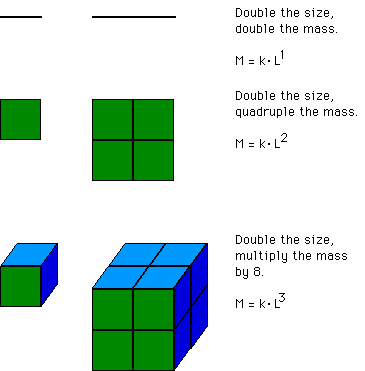
| (1) locating a point P inside the object (near the middle) and |
| (2) denoting by M(r) the amount of mass of the object inside the |
| circle (sphere if the object lies in space instead of in the |
| plane) of radius r and centered at P. |
| Box-counting and similarity dimension are two of a multitude of variations on the notion of dimension. | ||||
| Another, the mass dimension, is based on the idea of how the mass of an object scales with the object's size (assuming unchanged density). | ||||
 | ||||
| The mass dimension, dm, of an object is defined by | ||||
| ||||
| If this power law relation | ||||
| M(r) = k⋅rd | ||||
| holds over some range of r values, then the mass dimension dm = d. | ||||
| Assuming the shape has finite extent, the power relation holds only for a range of r values. | ||||
| When r becomes too large, the entire object is contained inside the circle of radius r and M(r) no longer changes as r increases. | ||||
| When r becomes too small, we are in the realm of atoms, quarks, superstrings, who knows what? There is no reason to exect the power law relation to hold on scales smaller than the forces that sculpt the object. | ||||
| Several examples are in power laws. | ||||
| There are other dimensions - Hausdorff, packing, Minkowski, ... many more. Each has advantages and disadvantages. For simple sets, all agree. But beyond these, the subject becomes a thicket difficult to penetrate. |